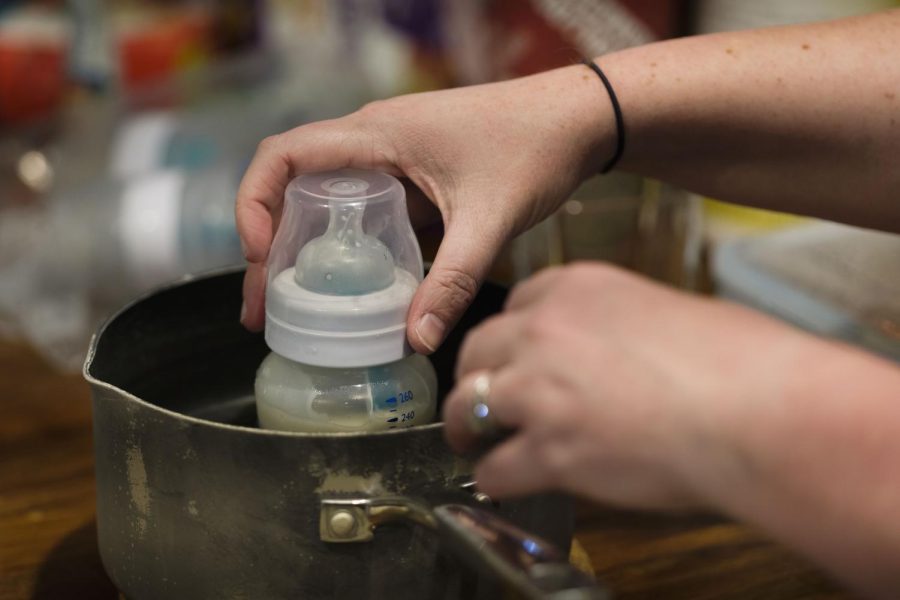Signs of improvement as national baby formula shortage enters ninth month
When a baby is born, their first meal is often within arm’s reach: the arms of their mother, that is. Breast milk is one option, but many parents end up choosing formula and this has been a particularly challenging year.
The baby formula shortage that panicked parents in the spring and early summer has stretched on for eight months, although there are signs of improvement. In May, 43% of baby formula was out of stock according to Datasembly, a company that tracks the shortage in real time. On October 26, market research firm IRI Worldwide released data that showed that the shelf stock rate for powdered infant formula was 87% a week earlier. Still, new data from the U.S. Census Bureau found that nearly one in three families struggled to find formula for their children in September.
Throughout the shortage, many mothers have become used to being asked they they don’t just breastfeed.
“The question does come across, why are we so dependent on formula?’ and it’s a good question,” Brenda Lewis, Breastfeeding Counselor at Middle Georgia’s Chapter of Breastfeeding USA, said. “But there’s a lot of reasons why a mother chooses not to breastfeed, and one of them can just be as simple as she just chose not to.”
Lewis said that formula can be an easier choice for many reasons, especially for working mothers looking to find childcare.
“[Formula feeding] does make it easier to find childcare for your child, because then they don’t rely on a mom to be there 24/7 to provide the feedings,” Lewis said. “And then it gives moms the freedom and liberty to be able to kind of do whatever they want to or need to, whether it’s work, school, meeting clients, showing houses.”
For some parents, the choice they wanted to make and the option they were forced take are at odds. Ashley Riley of Atlanta gave birth to her son, Jace, in December.
“The plan was to breastfeed before I had him and I had bought all this stuff, pumps and everything you could think of, geared toward me trying to breastfeed” Riley said in an interview earlier this year. “At our baby shower, no one actually bought us milk, because I was planning on breastfeeding.”
Initially, Riley was generating milk and breastfeeding her baby, but shortly after she got in the groove of breastfeeding, she encountered medical issues that no longer allowed her to do so.
“And then a few days after I stopped breastfeeding, the milk dried up,” Riley said. “There was no milk in my body left to give him, so he was only on formula.”
The six to eight weeks after a child’s birth are crucial in breastfeeding to establish the mother’s milk supply. This time limit became especially critical during the formula shortage when options were narrow.
“People just assume that people can breastfeed as a second option, especially if you had already stopped, you can’t just generate the milk in your body,” Riley said.
Riley said at the height of the formula shortage he husband searched 15 different stores for formula. Over the summer they started introducing solid foods “so we won’t have to rely so heavily on the formula”, an option that parents of newborns do not have.
The recent Census Bureau report found that overall the shortages were most acute in rural areas. In Georgia, parents, grandparents and guardians aged 65 and older were most likely to report having difficulty obtaining infant formula for the baby living in their home.


















